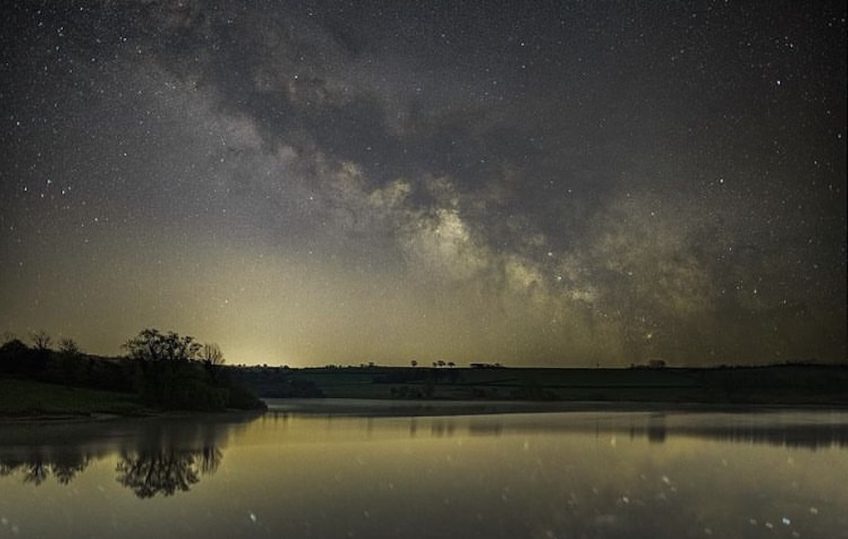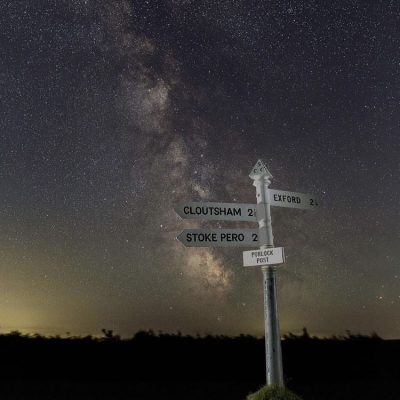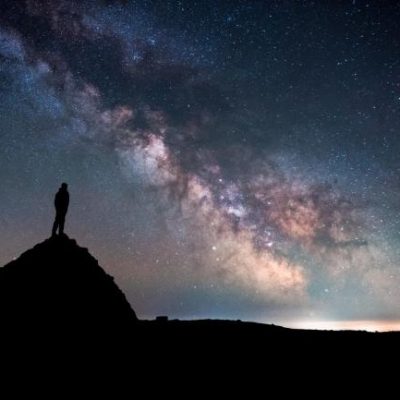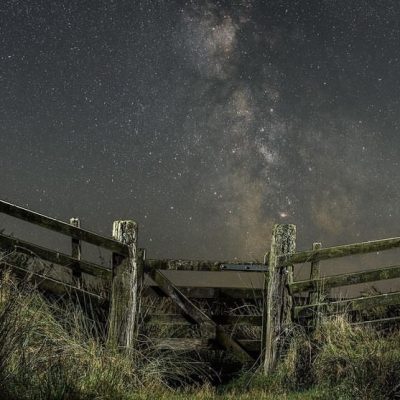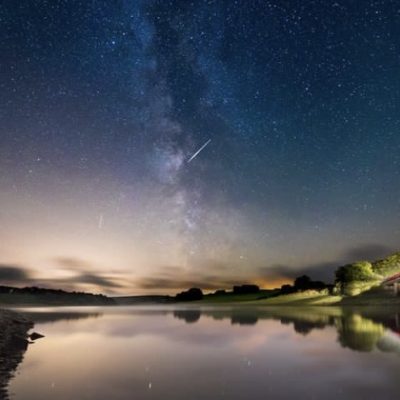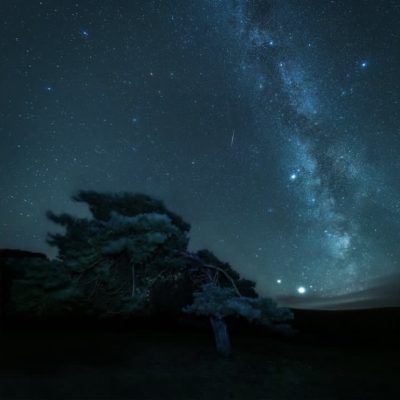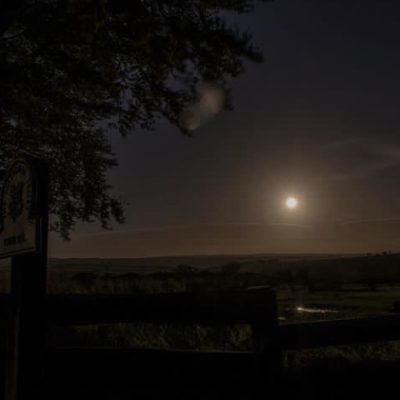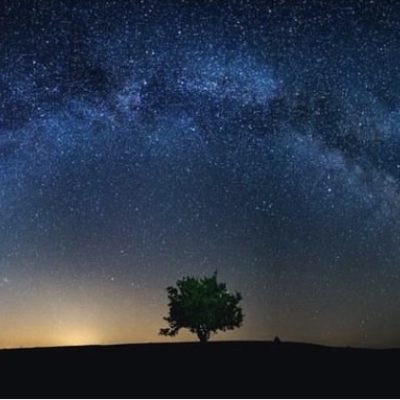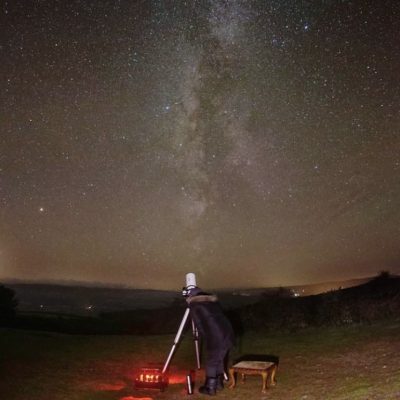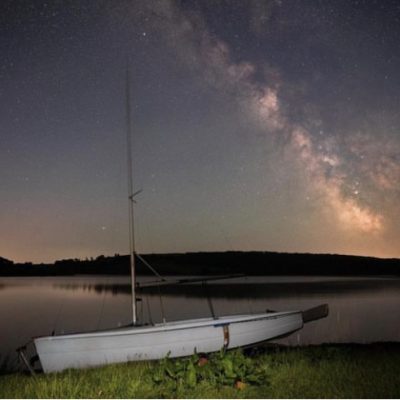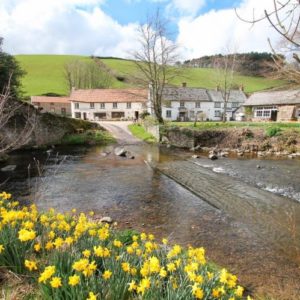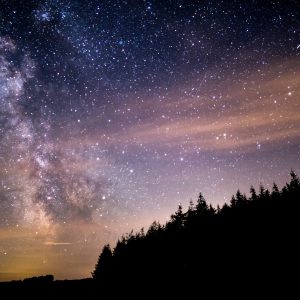If you find as much magic looking up into the night sky as we do, then we highly recommend you go stargazing on Exmoor. In 2011, Exmoor National Park was awarded Europe’s first Dark Sky Reserve Status in 2011 by the International Dark-Sky Association, in recognition of the incredible starry skies visible here.
Why Exmoor’s Dark Sky Reserve is so special…
These days, there are fewer and fewer places where the night sky can be observed in all its beauty… but Exmoor is one of them. Due to the remarkable low light pollution levels in the area (which The National Park continually works with businesses, councils and local individuals in order to preserve) and the magnificent, natural, expansiveness of the place, Exmoor is a stargazer’s paradise.
Outside on a dark night, here on Exmoor, it’s possible to see up to 3,000 stars with the naked eye. In a city environment, you might see 200 stars – if you’re lucky! So, it’s easy to qualify the unique nocturnal sights this rural haven has to offer. And honestly, gazing into the velvety blackness of a night sky sparkling with thousands of stars is an undeniably special experience.
When is the best time for Stargazing on Exmoor?
We could tell you it’s mid-late October. That’s the time of year when Exmoor’s skies are literally their darkest, and we have a whole Exmoor Dark Skies Festival with stargazing events & activities for people to get involved with throughout this time. But, honestly, stargazing on Exmoor is pretty great all year round!
Clear weather will help, of course. And, the closer you are to a new moon (i.e. when there’s no moon visible), then the more stars you will see. But you might be a moon-gazer! We certainly obsess over the extraordinary power & beauty of the moon on a regular basis…
And there’s loads of awe-inspiring celestial action and astronomical events you might want to plan a stargazing trip around. So, in case you’re not sure where to start, we’ve made you a list of the big ones…
Our Cosmic Calendar:
January
- – Quadrantid Meteor Shower – Although it’s often quite cold, the Quadrantids can produce some intense meteor showers. It’s best observed in the early hours and is next due to peak Wednesday 3rd – Thursday 4th January 2024.
- – Conjunction of Venus, Mars & Mercury – the next major planetary alignment will take place on Saturday 27th January 2024. Venus, Mars, and Mercury are due to align in the morning sky, all visible to the naked eye, whilst in the Sagittarius constellation.
- – Opposition of Mars – Approximately every two years, Mars comes into opposition with the Earth, making it especially bright and visible in the night sky. Its reddish hue makes it a captivating sight to behold. The next one is due to be on Thursday 16th January 2025.
June
- – Opposition of Venus: Venus is often referred to as the “Evening Star” or the “Morning Star” depending on its position relative to the Sun. During its opposition, it can appear particularly bright and striking. The next opposition of Venus is due to be Tuesday 4th June 2024.
August
- – Perseid Meteor Shower – One of the most famous meteor showers, the Perseids, occurs in August. This shower is known for producing bright and numerous meteors, making it a popular event for stargazers. The next one is due to be at it’s peak on Monday 12th August 2024.
- – Supermoons: A Supermoon occurs when a full moon coincides with the moon’s closest approach to Earth in its orbit. This results in a larger and brighter looking moon than usual. The next Supermoon is due to be Thursday 31st August 2023, the last one until Wednesday 18th September 2024.
- – Opposition of Saturn – Saturn will be located directly opposite the sun on Sunday 27th August 2024, as the earth orbits between the two.
September
- – Opposition of Neptune – you will probably need binoculars or a telescope to get a proper look at this one, but Neptune will next be in opposition and doing its best to be seen at the front of the Pisces constellation Wednesday 18th – Thursday 19th September 2023.
October
- – Exmoor Dark Skies Festival – Every year, the days before & after the October new moon, the skies are at their absolute darkest, which means from our low-light-pollution Exmoor Dark Sky Reserve, thousands and thousands of stars can be seen at their brightest. The festival runs an incredible programme of events and this year is from Friday 13th – Sunday 29th October (2023). For more information please click here.
- – Orionid Meteor Shower – Although not as intense as the Perseids, the Orionids are associated with Halley’s Comet and can provide a decent number of meteors to see. This year it’s due to be Saturday 21st – Sunday 22nd October (2023), right in the middle of the Exmoor Dark Skies Festival, which means there’ll be tons of expert stargazing guidance available, should you want it.
November
- – Opposition of Jupiter – as with previously mentioned oppositions, Jupiter will appear its biggest and brightest Thursday 2nd – Friday 3rd November 2023.
- – Opposition of Uranus – it will be Uranus’ turn to shine strong on Monday 13th November 2023.
December
- – The Geminid Meteor Shower – The Geminids are known for their colourful and bright meteors. One of the most active meteor showers we can witness.
Other things to look out for throughout the year…
- – The Milky Way: On moonless nights, the Milky Way – our band of stars and interstellar matter – can be seen stretching across the night sky. Exmoor’s dark skies provide an excellent opportunity to witness this cosmic river.
- – Lunar Eclipses: Lunar eclipses occur when the Earth passes between the Sun and the Moon, casting a reddish hue on the Moon due to Earth’s atmosphere.
- – Conjunctions – Conjunctions involve the close apparent approach of two celestial objects in the sky. These can include planets, the Moon, and even bright stars. They often make for stunning visual displays. We’ve included the next major planetary one in the list above, but see here for more.
Resources
You can hire a telescope for just £25 per night from the Exmoor National Park Information Centers
Exmoor National Park Dark Skies Pocket Guide
Here is an astronomers guide to Exmoor
And of course the various stargazing apps like Star Walk and Star Chart, just make sure you download the maps before you go as the best star gazing spots usually don’t have signal!
Our Stargazing Tips
- 1. Aim to start your stargazing on Exmoor at least an hour and a half after sunset, so that the sky has had a chance to get properly dark.
- 2. The closer you get to the new moon, the more stars will be visible, because even the smallest stars have a chance to shine in the pitch black with no moonlight.
- 3. Your eyes can take a while to adjust to the dark, before your night-vision kicks in. Therefore, it’s a good idea to use red torch lights, to get to or set up your stargazing spot, if you can. These are much better at preserving your night-vision than white lights are.
- 4. Plot your stargazing spot in daylight, so you know where to go when it’s dark. And make sure that it’s away from the glare of any other lights. Oh, and that it’s public land!
- 5. Wrap up warm! Even in high summer, it can get pretty chilly in the middle of the night, and you’ll last longer, enjoy it more and be more likely to see shooting stars & meteor showers if you’re cosy & comfortable.
- 6. Wimbleball Lake is known to be a particularly beautiful spot for stargazing on Exmoor, and is a favourite for those into Astrophotography.
- 7. The Poltimore Inn, near South Molton, has an observatory with telescopes! For a closer look, go check it out…
stargazing on Exmoor
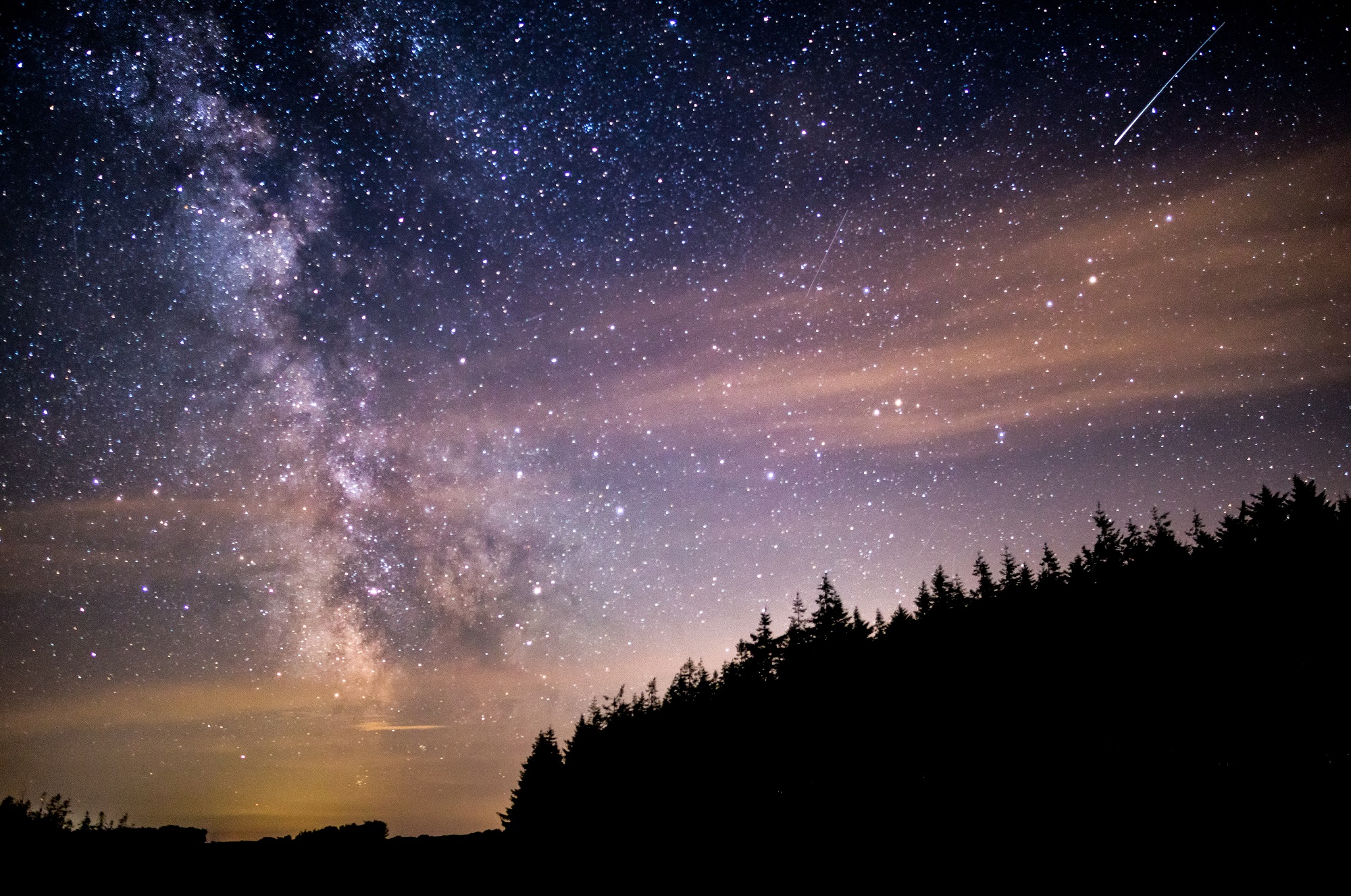
stargazing on Exmoor
Places to stay for stargazing on Exmoor:
We can recommend a ton of gorgeous cottages for you to book for a stargazing staycation on Exmoor. You might like to be near Wimbleball Lake, in which case perhaps Dulverton is the best area for you… Or perhaps you’d like to be as rural as it gets? In that case we suggest Malmsmead/Simonsbath way… Here are a few suggestions, but if you have any questions or have more specific requirements, please don’t hesitate to get in touch with us.
We hope this has been a helpful article for you! stargazing on Exmoor


